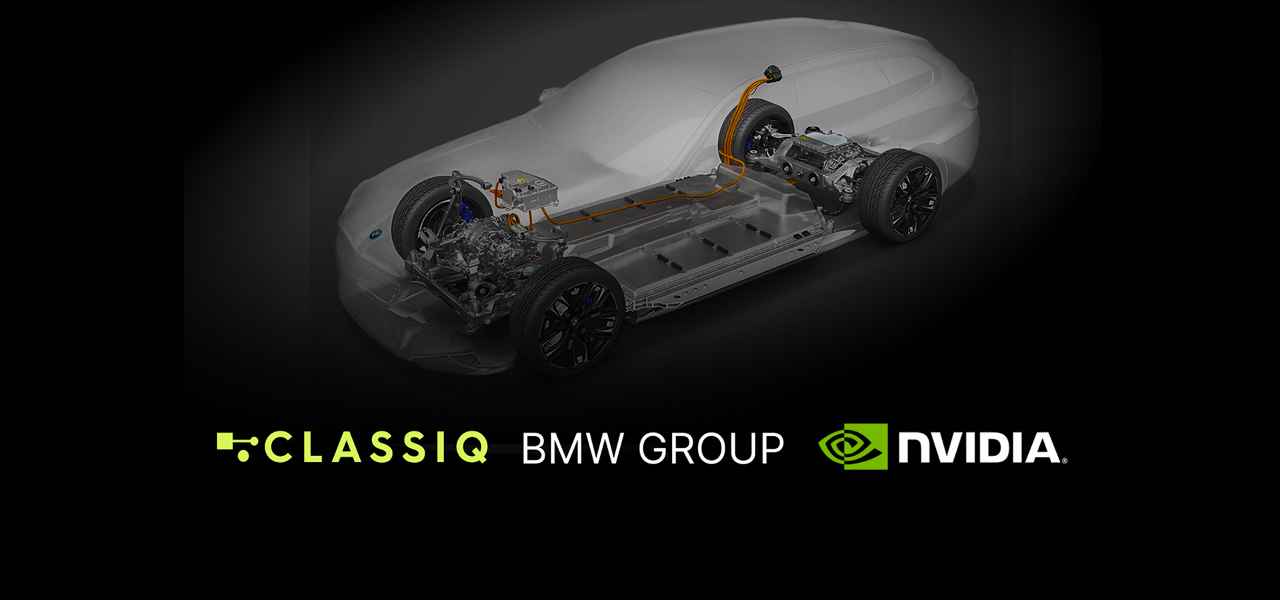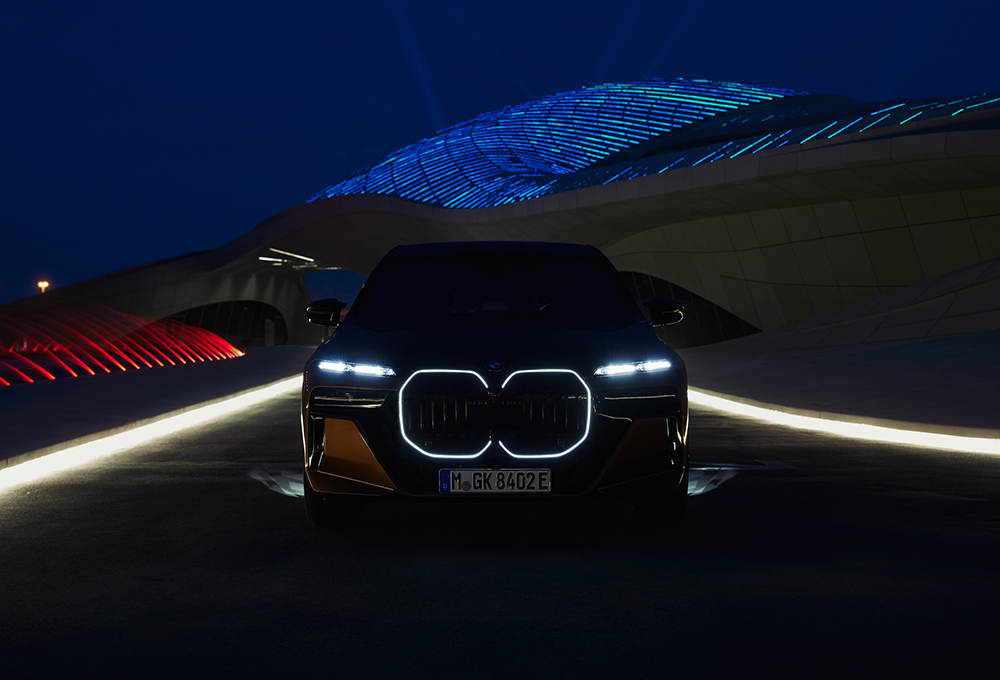 宝马集团可能借助Classiq量子设计平台和NVIDIA的GPU执行量子计算来改进未来汽车的电气和机械架构。(宝马)
宝马集团可能借助Classiq量子设计平台和NVIDIA的GPU执行量子计算来改进未来汽车的电气和机械架构。(宝马) 宝马 iX xDrive50 展示了汽车制造商未来的一个版本。即将推出的宝马汽车可能会采用利用量子计算研发的更高效架构。(宝马)
宝马 iX xDrive50 展示了汽车制造商未来的一个版本。即将推出的宝马汽车可能会采用利用量子计算研发的更高效架构。(宝马) Classiq曾将其量子计算效率技术应用于劳斯莱斯的航空事业。(Classiq)
Classiq曾将其量子计算效率技术应用于劳斯莱斯的航空事业。(Classiq)
从电机到机械臂,所有汽车组件均可利用强大的算法进行分析。
作为宝马汽车新兴技术团队的成员,Lukas Müller的工作是对各种新技术进行深入分析,以评估宝马是否有望应用这些技术。他并非首位考虑量子计算如何影响宝马集团造车方式的内部员工,但他向SAE透露,宝马正计划驾驭更强大的计算机以打造更优质的未来汽车,而他所做的工作只是冰山一角。
今年6月,宝马宣布将与Classiq和英伟达达成合作,共同研究最适合未来汽车的电气和机械系统的架构设计。他们的合作思路是利用量子计算开发出一种实时解决方案,将传动系看作线性方程组来分析动力总成中可能包含的电机、电池、冷却系统等一系列组件,从而提高汽车架构的效率。
Müller表示:“我们决定从一个非常基础的问题入手,选取汽车中的四个组件,并向算法提出问题,例如,‘这些组件之间采取怎样的热量传递和连接方式才能达到最高效率?’也许你会向算法提供一些解决方案,例如功率各不相同的冷却设备,当然这些方案可能会非常昂贵。而算法最终可能会输出这样的结果:‘最高效的解决方案是将这三个组件以A方式连接起来’,或是‘选择这四个组件,将其中三个相连,另一个仅与B组件相连’。”
Müller以宝马利用量子计算研究PVC的应用策略为例向我们进一步解释:“我们面临的主要问题是‘一个或多个机器人完成这项工作的最佳顺序是什么?’随着处理的接缝数增加,可执行的顺序数量可能会呈指数级增长。如果机器人可使用不同类型的工具,比如角式喷嘴或双喷嘴,那么问题就会变得更加复杂。即使只涉及到几秒钟,甚至不到一秒的用时变化,也会对后续流程产生影响。”
Everything from electric motors to robot arms can be looked at through the lens of a powerful algorithm.
As part of BMW’s Emerging Technologies team, Lukas Müller picks apart new ideas to evaluate if they are relevant for the automaker. He wasn’t the first at BMW to look into how quantum computing might change the way the German automaker builds cars, but he told SAE Media that the work he’s doing is just the tip of the iceberg when it comes to harnessing more powerful computers that will help build the better cars of tomorrow.
In June, BMW announced it would collaborate with Classiq and NVIDIA to find optimal architecture designs for the electrical and mechanical systems in future vehicles. The idea was to use quantum computing to develop a real-time solution that would make a vehicle’s architecture more efficient by analyzing a series of potential motors, batteries, cooling systems and other components that might be used in the powertrain by looking at a drive train as a series of linear equations.
“It’s a really complex system,” Classiq’s technical marketing manager, Erik Garcell, told SAE Media. “When you get into the data, you have to worry about the phase of the power going into these systems, too, and timing that and making sure it’s all good.”
Garcell said any eventual product that comes out of this project would be an on-board device that calculates what to turn on and what to turn off in which sequence based on real-time data. Since scalable quantum systems are not yet available, the difficult analysis would be done by the quantum computer before the vehicles are built. Then, simpler, on-board systems would use the learnings to control powertrain devices based on the rules the quantum system came up with. Garcell said the next step was to apply a quantum approximate optimization algorithm (QAOA) to the problem.
“We were trying to optimize the system of linear equations, that drivetrain we’re talking about of electrical components,” he said. “How do you optimize this huge and complex neural network? It’s not just the one pass. It’s feeding data into itself. You could think of it almost like a graph theory problem. By optimizing this using this QAOA algorithm, they’re able to figure out a more efficient system of linear equations which they can then backtrack out to the original system and say, this is the more optimal drive train. If this is connected to this, connected to this, connected to this, in this way, and the data is feeding to each other in this way, that would be the most efficient linear equation, the more efficient electronic drive train that would more often than not save energy.”
Step one of the whole process though, was understanding what quantum computers can and can’t do to solve this problem, according to BMW’s Müller. Understanding how robots might shave a few milliseconds off of their job time – another of BMW’s quantum computing projects – is different than running simulations to discover which pipe thickness will work best or how to optimize the flow of the cooling liquid in a vehicle.
“We decided on, as a very basic problem, taking four components that would exist in a car and asking, for example, how do we transfer heat between them and how do we connect them together,” Müller said. “Maybe you could put into the solution space a range of different coolers which have different powers but, of course, they might be more expensive. In the end, the algorithm would spit out, ‘the most efficient one is taking these three and connecting them together in that way,’ or ‘take these four, but connect these three and this one only to this component.”
Classiq previously worked with Rolls Royce on jet engines and has done work with other automotive OEMs. The work with BMW, though, is the first automotive endeavor that Classiq can talk about publicly.
“Quantum computers are supposed to be, essentially, the game changer for optimization,” Garcell said. “A lot of companies are looking at them, not just to make their electric cars more efficient, but to build better batteries themselves, through quantum simulation, to create kind of new compounds for the battery that can either charge faster or hold more charge overall. There are a lot of different places people are looking into quantum computing for the automotive space.”
BMW does have a small number of people working on quantum computing, doing their own research, working on papers and working with external companies, Müller said. In early 2024, BMW partnered with Airbus for the Airbus-BMW Group Quantum Computing Challenge (ABQCC) which was designed to “harness quantum technologies for real-world industrial applications.”
Before investigating electrical architectures using quantum computers, BMW used the technology to test out factory improvements. Specifically, Müller was involved in quantum work on robot path planning in a manufacturing facility. BMW hasn’t yet putting quantum computing’s solutions to work in its plants, with optimized robots cruising around actual production lines. Instead, BMW is investigating which problems are amenable to quantum computer solutions and how much speed and efficiency might be gained.
“Optimization problems are one of our key areas because we have quite a lot of them,” Müller said. “Producing and designing vehicles is one of the most complex tasks there is. Nowadays, there are more and more robot arms that work in the factory. And you always want to decrease the time they need to finish a certain task, because this can have big influences on how quick we are able to produce the cars.”
BMW used quantum computing to investigate its PVC application strategy, Müller said. “The main question is, ‘what’s the best order for one or maybe multiple robots to do this?’ The number of possibilities of the order that you can do increases exponentially with the number of seams that you have. It gets more complex if you have different kinds of tools that the robot can use, maybe corner nozzles or ones with two nozzles. Even if you [just] get a couple of seconds, or less than a second improvement, this can have influences down the line.”
等级
打分
- 2分
- 4分
- 6分
- 8分
- 10分
平均分
